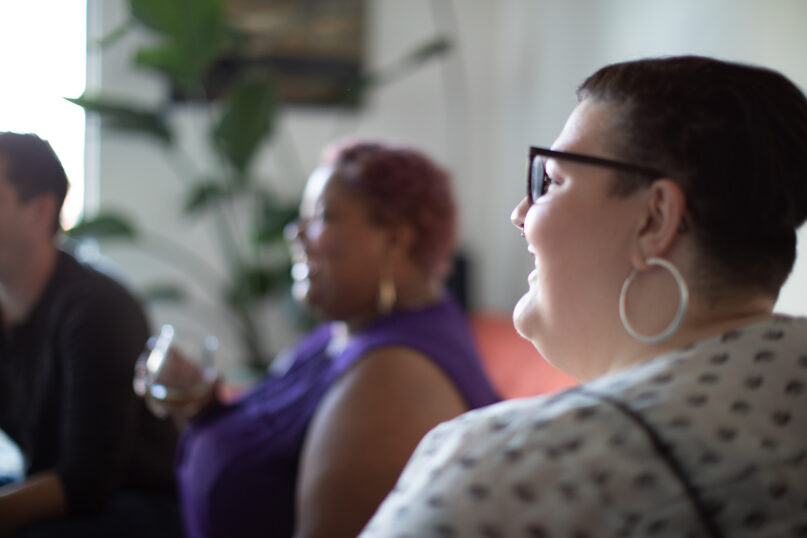(RNS) — In December 2019, Rabbi Minna Bromberg was celebrating Hanukkah with her daughter’s preschool class at a Jerusalem synagogue. After the class enjoyed sufganiyot — traditional jelly-filled fried dough treats — one of the adults present called out, “Let’s get back to dancing — unless you’ve gotten too fat from those sufganiyot!”
Bromberg didn’t find the punchline funny. Instead, it became a “birthing point,” she said, for her blog, Fat Torah, launched in 2020, to “end weight stigma in Jewish Communal Life,” according to the website.
The same kind of experience motivated J. Nicole Morgan. One morning around 2006 she stopped by her Southern Baptist church in Fayetteville, Georgia, to pray. She was soon joined at the altar by another woman from the church who began praying over her, unprompted, asking that Morgan be freed from the sin of her weight.
“This person was trying to be helpful, but all they saw was my body,” said Morgan. “They weren’t curious about my needs, they just made the assumption and went with it.”
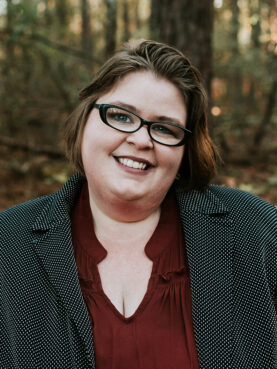
J. Nicole Morgan, author of “Fat and Faithful: Learning to love our bodies, our neighbors, and ourselves.” Photo by Faryl Ann Photography
The encounter led Morgan to attend seminary, where she studied the theological concept of embodiment and, in 2018, to write a book called “Fat and Faithful.” With Amanda Martinez Beck she founded a Facebook group called “All Bodies Are Good Bodies” that now boasts 1,200 members.
Both women are part of a small but growing group of religious fat liberationists who say it’s possible to be fat and healthy and who oppose fat phobia in all its forms, especially as it shows up in religious spaces.
Fat liberation has been around since the late ’60s and early ’70s, when groups like the National Association to Advance Fat Acceptance and the more radical Fat Underground began organizing protests and writing manifestos on fat liberation. Though many of the movement’s early leaders were Jewish, religion has only played a significant role in fat liberation discourse since the 2000s, according to Beck, who writes about the movement’s origins in her forthcoming book “More of You: The Fat Girl’s Field Guide to the Modern World.”
The newer, religious branch of the movement targets faith-based diet culture, an often cringe-worthy trend that made careers in the evangelical Christian industry. Gwen Shamblin’s “The Weigh Down Diet” was a 1990 landmark in a history that includes diet devotionals such as Robin Merrill’s 2016 book “More Jesus Diet: More of God, Less of Me, Literally.”
“Even on some of the newest platforms, like TikTok, there are groups for Christian better bodies, Christian diet tips,” said Moriah Reichert, a Ph.D. candidate who studies religion, popular culture and embodiment at Indiana University. “It’s still alive and well, even as there are movements to ask questions about how we are thinking about our bodies in faith spaces.”
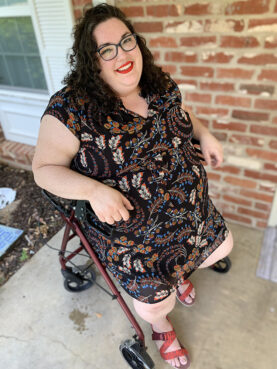
Amanda Martinez Beck. Courtesy photo
Fat liberationists say that by equating fatness with sin, faith-based diet culture exiles those whose bodies are naturally bigger.
“I was implicitly taught that if I were fat, why would anybody want to listen to what I had to say about God? Because there was this idea that I somehow had a lack of self-control,” said Beck.
Morgan wants to correct the assumption that fat people are gluttonous. “Gluttony is when you consume in a way that harms other people, not just eating a lot,” she said, “because God also tells you to feast.” She also believes that fat people, like all people, are created in God’s image. “My fat body has something to share with the world about God that a thin body doesn’t, and vice versa.”
RELATED: Let fat people speak for themselves — that’s the way you end ‘fatphobia’
Bromberg said she started dieting as a seven-year-old and dieted until she was 16. “I really felt that just about any problem that I had would be solved if I were smaller.” Today, with 30 years of experience in fat activism and 10 years as a rabbi, Bromberg says her abandonment of diet culture is consistent with the freedom promised in Scripture.
Bromberg notes that the Hebrew word for Egypt, Mitzrayim, can be translated as “narrowness,” and compares her liberation to the Book of Exodus’ story of the Hebrews leaving slavery in Egypt: It is a departure from the expectation that bodies should be physically narrow.
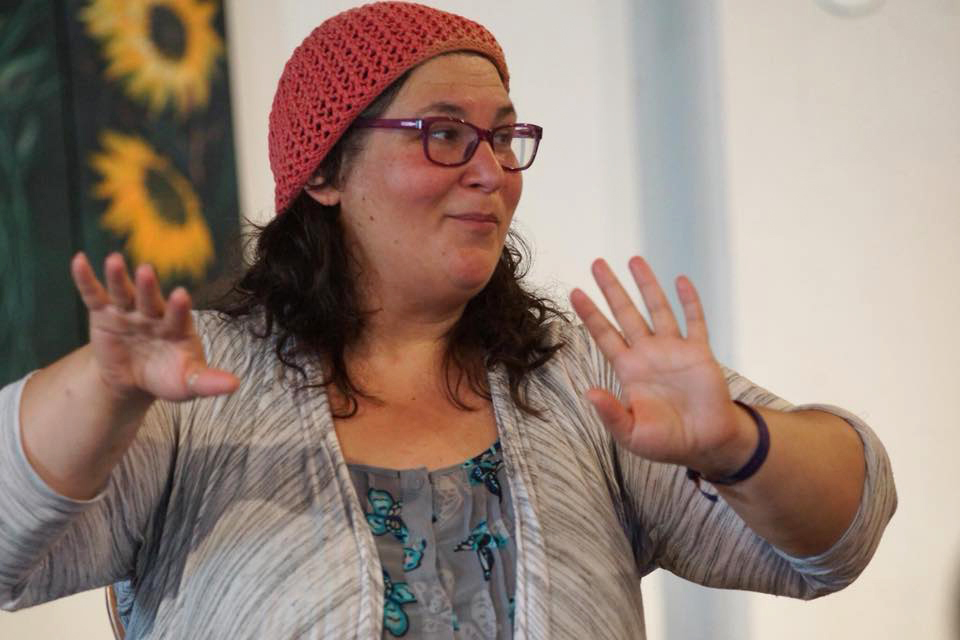
Rabbi Minna Bromberg at a voice workshop in 2018. Courtesy photo
“As a 16-year-old, that was really powerful to me to feel like my own story of leaving diet culture was really about freedom from narrowness,” said Bromberg.
An essential part of fat liberation, Bromberg believes, is building community. She moderates a 500-person Facebook group dedicated to fat liberation from a Jewish perspective and facilitates workshops that address weight stigma and the ways Jewish tradition can be deployed in liberating ways.
“Religious community can be the site of quite a bit of harm, but we intend as leaders in religious and spiritual life to create spaces of belonging and connection,” she said.
Leah Vernon, a hijab social media influencer and model, has cultivated her own unique community of fat liberation on Instagram. Author of the memoir “Unashamed: Musings of a Fat, Black Muslim,” Vernon was raised in a Muslim community and today identifies more as a spiritual Muslim.
“I made the choice to extract a lot of the teachings of patience and hope, things like that, and I created more of a spiritual situation that worked for me, instead of trying to show other people how good of a Muslim I was,” said Vernon. She has struggled with the ways that religious modesty teachings have implied that people with curves are inherently immodest.
When Vernon stumbled across the #plussizedmodels hashtag on Instagram, she knew she’d found her calling. The models gave her the freedom to be seen, to take up space.
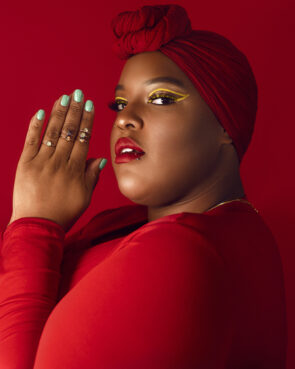
Leah Vernon. Photo by Maryam Saad @funlens
“I’m the first fat Black Muslim to do a Target campaign, or with Athleta and Dove, get flown out to Europe for commercials. I’m very proud,” said Vernon. “I cry when I see my own ads, because I never expected that, ever. I didn’t think it was possible.”
Vernon uses the terms body positivity and fat liberation interchangeably, in part because she wants people to see women like her when they use the body positivity hashtag on social media. She notes that the term has been co-opted by white women who can easily find their clothing size in any store.
“There have been marginalized, fat queer Black women and femmes who have been screaming about body inclusion for decades. And you have white women come along, and now it’s important,” she said.
Vernon isn’t the only one who sees body positivity — a movement in which influencers and corporations advocate for individual self-acceptance — as a whitewashed iteration of the original fat liberation movement.
“The body positive movement, as it’s been popularly accepted and disseminated on social media, has become more about body image, which doesn’t necessarily help fat people,” said Reichert. “It doesn’t help get them access to health care or disrupt the fact that they get heckled on the street or can’t go to the grocery store without people commenting on what they are putting in their cart.”
RELATED: There’s more to wellness than looking pretty
In religious spaces, Morgan suggested that leaders should think about accessibility — sizes of event T-shirts, of choir robes, door openings or the spacing of chairs and pews.
While advocating for society-wide changes, each of these leaders also looks for small acts of resistance. Beck posts full body pictures of herself on the internet, bearing witness to her abundant life. Vernon challenges her own expectations and those of others by showing up in places such as yoga class. Bromberg enjoys fried foods during Hanukkah — because that’s what the holiday is all about.
“This holiday is a celebration of the miracle of fat,” said Bromberg, recalling the miracle of the oil for the Temple’s menorah that lasted eight days longer than expected. “We eat fried foods because fat is a symbol of survival in face of adversity.”
